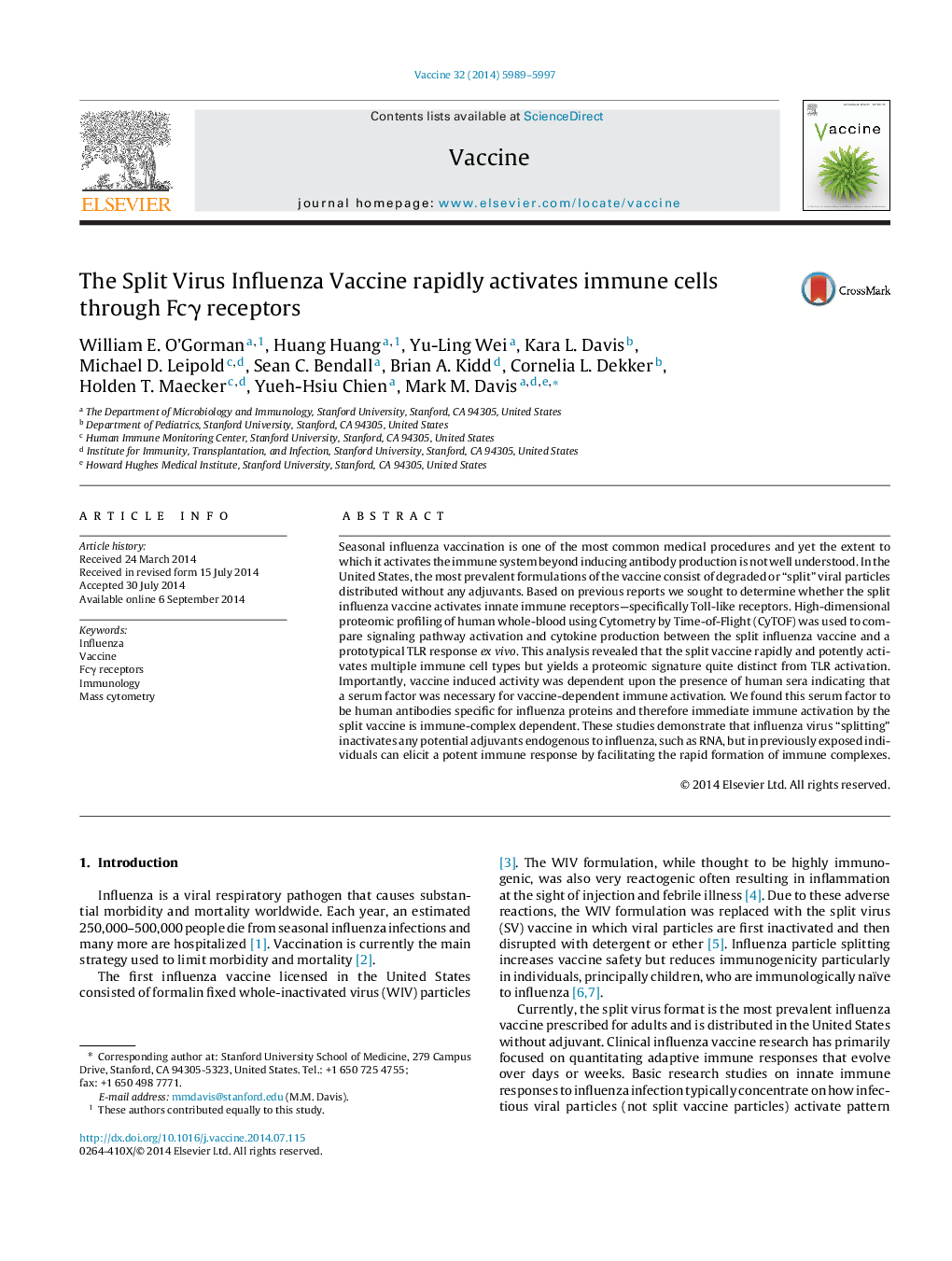| Article ID | Journal | Published Year | Pages | File Type |
|---|---|---|---|---|
| 10965797 | Vaccine | 2014 | 9 Pages |
Abstract
Seasonal influenza vaccination is one of the most common medical procedures and yet the extent to which it activates the immune system beyond inducing antibody production is not well understood. In the United States, the most prevalent formulations of the vaccine consist of degraded or “split” viral particles distributed without any adjuvants. Based on previous reports we sought to determine whether the split influenza vaccine activates innate immune receptors-specifically Toll-like receptors. High-dimensional proteomic profiling of human whole-blood using Cytometry by Time-of-Flight (CyTOF) was used to compare signaling pathway activation and cytokine production between the split influenza vaccine and a prototypical TLR response ex vivo. This analysis revealed that the split vaccine rapidly and potently activates multiple immune cell types but yields a proteomic signature quite distinct from TLR activation. Importantly, vaccine induced activity was dependent upon the presence of human sera indicating that a serum factor was necessary for vaccine-dependent immune activation. We found this serum factor to be human antibodies specific for influenza proteins and therefore immediate immune activation by the split vaccine is immune-complex dependent. These studies demonstrate that influenza virus “splitting” inactivates any potential adjuvants endogenous to influenza, such as RNA, but in previously exposed individuals can elicit a potent immune response by facilitating the rapid formation of immune complexes.
Related Topics
Life Sciences
Immunology and Microbiology
Immunology
Authors
William E. O'Gorman, Huang Huang, Yu-Ling Wei, Kara L. Davis, Michael D. Leipold, Sean C. Bendall, Brian A. Kidd, Cornelia L. Dekker, Holden T. Maecker, Yueh-Hsiu Chien, Mark M. Davis,
